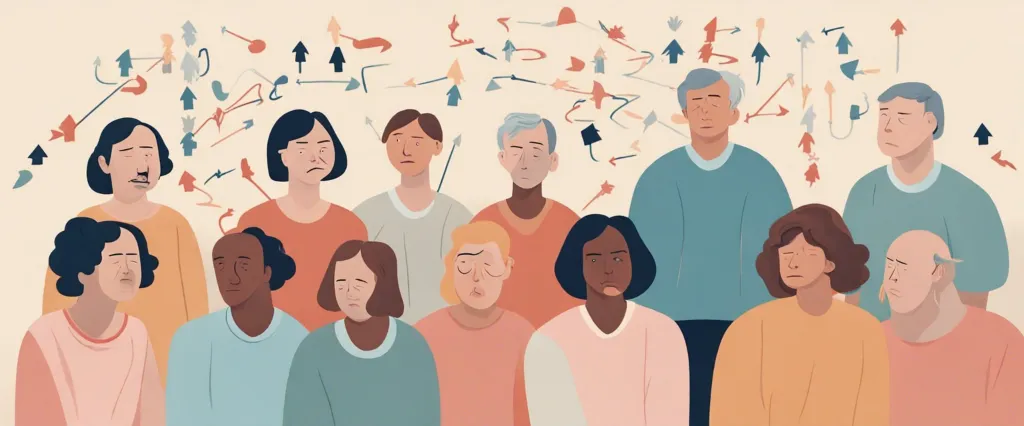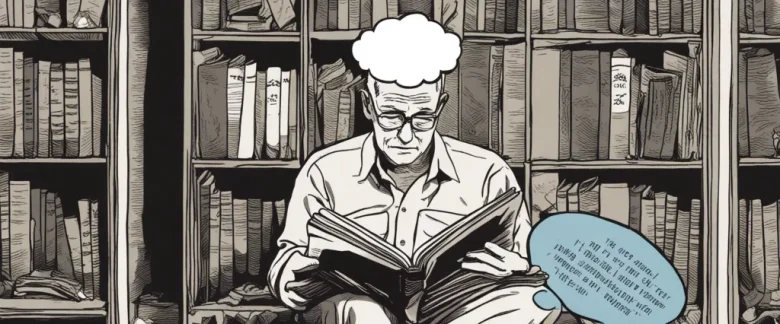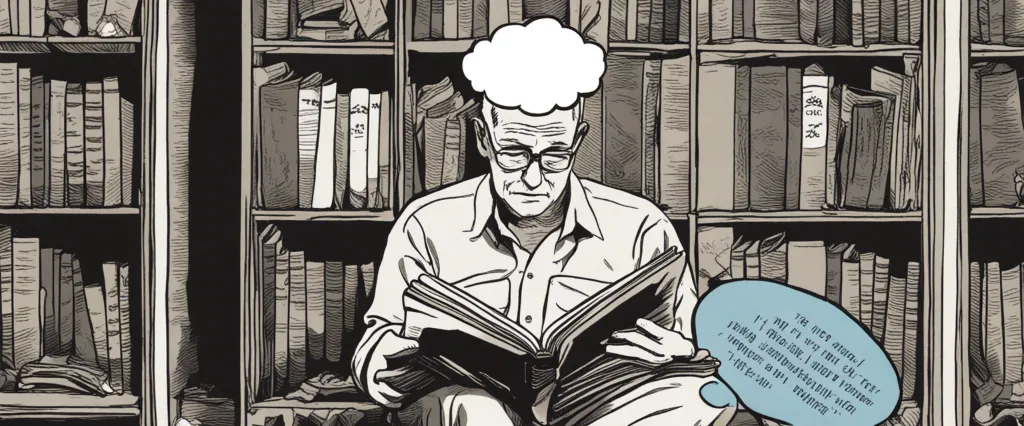In The Age of Empathy, renowned primatologist and ethologist Frans de Waal delves into the fascinating world of animal behavior to challenge the prevailing assumption that humans are inherently selfish and driven by self-interest. De Waal, a distinguished professor at Emory University and director of the Living Links Center at the Yerkes National Primate Research Center, has dedicated his career to studying the complex social networks and emotional lives of primates. Drawing from years of groundbreaking research and extensive field observations, de Waal presents a captivating argument for the existence of empathy in various animal species, including humans. He offers an insightful and thought-provoking exploration of empathy’s evolutionary origins, its vital role in fostering cooperation and social bonds, and its potential implications for building a more compassionate society.
Chapter 1: The Nature of Empathy
Chapter 1: The Nature of Empathy of the book “The Age of Empathy” by Frans de Waal delves into the concept of empathy and its significance in our lives. De Waal, a renowned primatologist and ethologist, explores how empathy is not exclusive to humans but rather a deeply rooted trait among many species, including our closest relatives, the primates.
De Waal begins by discussing traditional views that considered empathy as a higher-level human quality, setting humans apart from other animals. However, he challenges this notion by providing numerous examples of empathetic behavior observed in various animals. From chimpanzees offering comfort to a distressed group member to elephants displaying compassion towards injured or grieving companions, empathy is found across the animal kingdom.
The author emphasizes the importance of empathy for social cohesion and cooperation within a species. Empathy serves as a binding force, enabling individuals to understand and share the emotions of others. By connecting with the emotions of others, empathy facilitates the formation of complex social relationships and promotes prosocial behaviors.
De Waal also explores the neural mechanisms of empathy, highlighting studies that reveal similar brain structures related to empathy in both humans and other animals. These findings further support the idea that empathy is not a uniquely human trait.
Through anecdotes, research studies, and evolutionary perspectives, De Waal presents a strong case for empathy as a fundamental aspect of our biology and an essential characteristic for the survival and well-being of many species, including humans. Understanding this natural inclination towards empathy offers valuable insights into our collective social behavior and can guide us in creating a more empathetic and compassionate society.
Chapter 2: Empathy in the Animal Kingdom
In Chapter 2 of “The Age of Empathy” titled “Empathy in the Animal Kingdom,” Frans de Waal delves into the broad spectrum of empathetic behaviors observed in various animal species. He argues against the traditional notion that empathy is a uniquely human trait and offers compelling evidence of its existence in animals.
De Waal starts by outlining two types of empathy: emotional contagion and cognitive empathy. Emotional contagion refers to a basic form of empathy where individuals mimic the emotional states of their companions. Cognitive empathy, on the other hand, involves the ability to understand and infer the emotional states of others, leading to more complex behaviors. De Waal provides numerous examples of these empathetic behaviors across different species, including primates, elephants, dolphins, and even rodents.
He highlights the significance of mirror neurons, specialized brain cells that fire both when an individual performs an action and when they observe others carrying out the same action. Mirror neurons allow animals to emotionally resonate with the experiences of others, enabling them to feel their pain or joy. This understanding helps animals respond appropriately in social situations and can lead to prosocial behaviors.
Furthermore, De Waal explores the concept of consoling behaviors, where individuals comfort distressed or injured peers. Consolation is widely observed among primates, where individuals offer physical contact, grooming, or vocalizations to soothe their companions. Such behaviors demonstrate the ability to recognize and respond to the emotional needs of others.
Overall, De Waal provides compelling evidence for empathy in the animal kingdom, challenging the commonly held belief that empathy is unique to humans. By showcasing various empathetic behaviors and their underlying mechanisms, he broadens our understanding of empathy as a fundamental part of social interactions among animals.
Chapter 3: The Roots of Human Empathy
Chapter 3: The Roots of Human Empathy explores the origins and development of empathy in human beings as discussed by Frans de Waal in his book, The Age of Empathy. This chapter provides a detailed overview of various studies conducted on empathy in primates, highlighting the evolutionary roots of this capacity and how it manifests in different species.
De Waal begins by discussing the biological basis of empathy, emphasizing that it is not restricted to humans alone. Drawing on research with primates such as chimpanzees and bonobos, he highlights striking examples of empathy in these species, including consolation behaviors, sharing food, and physical support. These instances suggest that empathy has deep evolutionary roots and is not solely a human trait.
The chapter then moves on to explore the similarities between human and primate emotions, providing evidence for empathy’s connection to other emotional responses. The existence of mirror neurons in primate brains further supports this notion, as they enable individuals to perceive and mimic the emotions and actions of others, fostering empathy.
De Waal also delves into the prenatal and early developmental stages of empathy in humans, discussing studies involving neurological responses in infants. These studies demonstrate that infants are inherently sensitive and responsive to the emotional states of others, indicating an innate tendency towards empathy.
The chapter concludes by arguing that humans have a fundamental capacity for empathy due to our evolutionary heritage. While acknowledging the cultural and individual differences that shape empathy in humans, de Waal stresses that empathy is deeply rooted in our biological makeup.
In summary, Chapter 3 provides evidence for the existence of empathy in primates and emphasizes its evolutionary origins. By examining studies on empathy in primates and humans, de Waal suggests that empathy is a fundamental aspect of our nature, demonstrating its significance in fostering cooperative social relationships.
Chapter 4: Empathy and Morality

Chapter 4 of “The Age of Empathy” by Frans de Waal explores the intersection between empathy and morality. The author delves into the idea that empathy serves as a powerful foundation for moral decision-making and ethical behavior in humans and other animals.
De Waal begins by examining various experiments that demonstrate animals’ capacity for empathy. He narrates anecdotes about bonobos, chimpanzees, and elephants who exhibit empathetic behaviors such as consoling, sharing, and taking care of others. He argues that empathy is not limited to humans and can be observed in other species as well.
The author further emphasizes that empathy forms the basis of social behavior and cooperation. He delves into the notion that empathy is a precursor to morality, as it allows individuals to understand and respond to the needs and emotions of others. De Waal contends that empathy leads to moral decision-making by motivating individuals to act in ways that benefit others and respect their well-being.
Drawing on numerous studies, de Waal highlights that humans have a profound capacity for empathy. He discusses research that reveals how humans activate neural circuits associated with empathy when witnessing others’ pain or distress. He also explores the role of empathy in prosocial behavior, generosity, and moral judgments.
In summary, Chapter 4 of “The Age of Empathy” provides a comprehensive exploration of the connections between empathy and morality. De Waal presents evidence from both animal and human studies to argue that empathy is a fundamental quality that not only shapes our moral decision-making but also underpins our social relationships and cooperative behavior. Understanding and harnessing our capacity for empathy can pave the way for a more compassionate and moral society.
Chapter 5: Empathy in Society
Chapter 5 of “The Age of Empathy” by Frans de Waal explores empathy in society, focusing on the role of empathy in human communities and its impact on social dynamics. De Waal argues that empathy is a fundamental aspect of our social existence and is deeply rooted in our evolutionary history as social animals.
The chapter begins by discussing how empathy is not solely an individual trait but also a social phenomenon. It emphasizes that empathy is essential for the functioning of any society, as it fosters cooperation, understanding, and support among members. De Waal presents various examples of empathy in social contexts, including animals helping each other, humans displaying empathic behavior, and instances where empathy is lacking and social systems suffer.
The author explores how empathy expands beyond personal relationships to encompass communities, nations, and even global networks. He highlights the importance of empathic leadership and the potential positive effects it can have on society as a whole. De Waal suggests that societies which prioritize empathy tend to be more cohesive and tolerant, leading to better emotional well-being and overall social success.
Furthermore, the chapter delves into the relationship between empathy and morality. De Waal argues that empathy provides a foundation for moral behavior, as understanding and sharing the emotions and experiences of others allow us to act ethically and make decisions that benefit the greater good of society.
In conclusion, Chapter 5 of “The Age of Empathy” emphasizes that empathy is not just an individual characteristic, but a vital force that shapes society. It highlights the profound impact empathy has on social dynamics, cooperation, leadership, and moral behavior. By recognizing the significance of empathy in our communities, we can work towards building a more empathetic and compassionate society.
Chapter 6: Empathy and Power
Chapter 6 of “The Age of Empathy” explores the intricate relationship between empathy and power. Frans de Waal discusses how individuals in positions of power may struggle to display empathy due to a variety of factors, while also acknowledging the potential positive impact that empathetic leaders can have on society.
The chapter starts by examining the issue of power, asserting that it tends to amplify preexisting qualities rather than creating new ones. Leaders with empathetic tendencies are more likely to employ their power in a way that benefits others, fostering cooperation and solidarity in their communities. On the other hand, individuals lacking empathy may become tyrannical or indifferent, leading to a decline in social cohesion.
De Waal then highlights a common belief that power makes individuals less sensitive to others’ emotions, but challenges this notion by discussing various studies that suggest otherwise. He presents evidence that power itself does not necessarily diminish empathy, but rather, it exposes individuals’ preexisting empathetic capacities. In fact, hierarchies among animals often rely on empathetic individuals who can effectively coordinate group dynamics.
The chapter also delves into the social implications of power and empathy, focusing on how empathy can mitigate the negative effects of power imbalances. By strengthening empathy in leaders and encouraging the recognition of others’ perspectives, societies can work towards creating more egalitarian systems. Additionally, de Waal emphasizes the importance of empathy in promoting social justice and reducing disparities within society.
In summary, Chapter 6 of “The Age of Empathy” illuminates the complex interplay between power and empathy. It challenges the commonly held notion that power hampers empathy and emphasizes the potential for empathetic leadership to foster social cohesion and justice. By recognizing the significance of empathy in positions of power, we can strive towards creating a more compassionate and equitable world.
Chapter 7: Empathy and Education
Chapter 7 of Frans de Waal’s book, “The Age of Empathy,” delves into the relationship between empathy and education. De Waal explores the importance of empathy in human development and argues that it should be a fundamental aspect of education rather than being disregarded or overlooked.
The chapter begins by discussing how empathy is ingrained in our evolutionary history as a fundamental social behavior. De Waal argues that it is not solely a learned behavior but instead has deep roots in our biology. He emphasizes that empathy is not limited to just humans; it is observed in various social animals, highlighting its significance in society.
De Waal then moves on to explore the role of empathy in education. He suggests that empathy is an essential skill that should be taught from an early age. By cultivating empathy, children can develop a better understanding of the emotions and perspectives of others. This understanding can lead to improved social interactions, conflict resolution, and cooperation among individuals.
The chapter also highlights various studies that indicate how empathy can positively impact educational outcomes. Empathetic teachers foster an inclusive and supportive classroom environment, leading to enhanced student engagement and academic performance. Furthermore, empathy plays a crucial role in reducing bullying, prejudice, and aggression, creating a more harmonious and accepting educational environment.
De Waal emphasizes that empathy is not just a soft skill but a vital tool for creating a better society. By incorporating empathy into our education system, we can nurture compassionate individuals who are capable of promoting empathy within their communities.
In summary, Chapter 7 of “The Age of Empathy” argues for the importance of integrating empathy into education. De Waal presents evidence from scientific research to support the benefits of empathy in various aspects of human development. By prioritizing empathy in education, we can create a more empathetic and compassionate society.

Chapter 8: Building a Kinder Society
Chapter 8 of “The Age of Empathy” by Frans de Waal, titled “Building a Kinder Society,” explores the potential for creating a more empathetic and compassionate society. De Waal presents evidence from various studies that suggest kindness and empathy are deeply rooted in human nature and have evolved over the course of our history.
The chapter begins by discussing the importance of empathy in human relationships and its connection to morality. De Waal argues that empathy is not limited to humans but is also present in other animals, challenging the view of humans as inherently selfish beings. He explores the evolutionary origins of empathy, drawing upon research on primates and their capacity for empathy and cooperation.
De Waal also addresses the role of emotions in promoting empathy and prosocial behavior. He explains how emotions like guilt, shame, and compassion can drive individuals to behave in a more ethical and caring manner. He uses examples from different cultures and societies to illustrate how these emotions are shaped by social norms and can guide moral behavior.
Furthermore, the chapter delves into the influence of social institutions on promoting kindness in society. De Waal highlights the importance of education, parenting, and community structures in fostering empathy from an early age. He suggests that teaching empathy and moral values should be integrated into school curricula and that parents should prioritize raising empathetic children.
In conclusion, Chapter 8 emphasizes the innate capacity for empathy in humans and its potential to shape a more compassionate society. It calls for a collective effort to nurture empathy through education, social institutions, and cultural norms. By recognizing and cultivating our empathetic nature, De Waal argues for the possibility of building a kinder and more understanding world.
After Reading
In “The Age of Empathy” by Frans de Waal, the author explores the importance of empathy in both animals and humans. He argues that empathy is an innate trait that is crucial for not only our survival but also for creating a more compassionate and cooperative society. Through extensive research and examples from the animal kingdom, de Waal convincingly shows that empathy is a driving force in our evolution, dispelling the notion that empathy is solely a human characteristic. Furthermore, he challenges the assumption that selfishness and aggression are the dominant forces in human behavior, highlighting numerous instances of empathy and prosocial behavior. The book concludes with a call to recognize and nurture our empathetic abilities, suggesting that understanding and valuing empathy can lead to a more empathic and interconnected world. Overall, “The Age of Empathy” offers a compelling argument for the importance of empathy and its positive impact on our relationships, societies, and ultimately on our own well-being.
1. “Animal Liberation: The Definitive Classic of the Animal Movement” by Peter Singer: This thought-provoking book explores the ethical treatment of animals and argues for the recognition of their rights and empathetic treatment.
2. “The Moral Arc: How Science and Reason Lead Humanity Toward Truth, Justice, and Freedom” by Michael Shermer: Shermer explores the evolutionary forces that have shaped empathy and morality throughout human history, providing a compelling argument for compassion and understanding.
3. “The Empathy Exams” by Leslie Jamison: This collection of essays delves into the exploration of empathy through the author’s personal experiences as a medical actor, highlighting the complexities and challenges of connecting with others.
4. Emotional Intelligence: Why It Can Matter More Than IQ” by Daniel Goleman: Goleman investigates the concept of emotional intelligence and emphasizes the importance of empathy in understanding and navigating our social interactions.
5. The Empathic Civilization: The Race to Global Consciousness in a World in Crisis” by Jeremy Rifkin: This book explores the evolution of empathy throughout history and its potential for transforming our societies and resolving global challenges. Rifkin argues that empathy is central to creating a more sustainable and just world.




